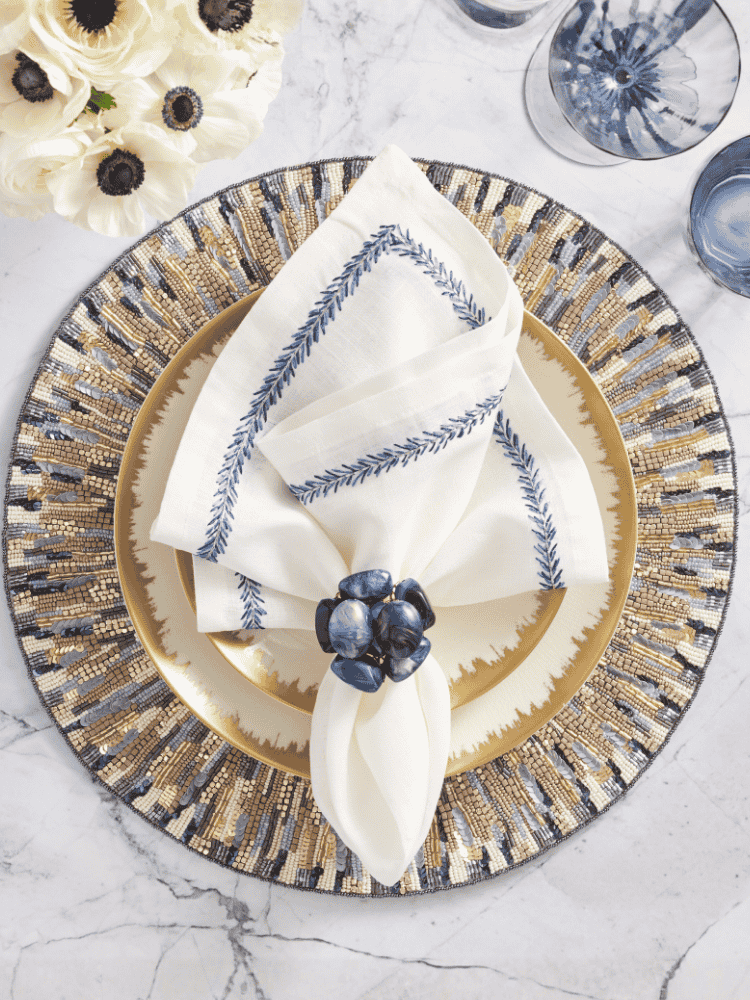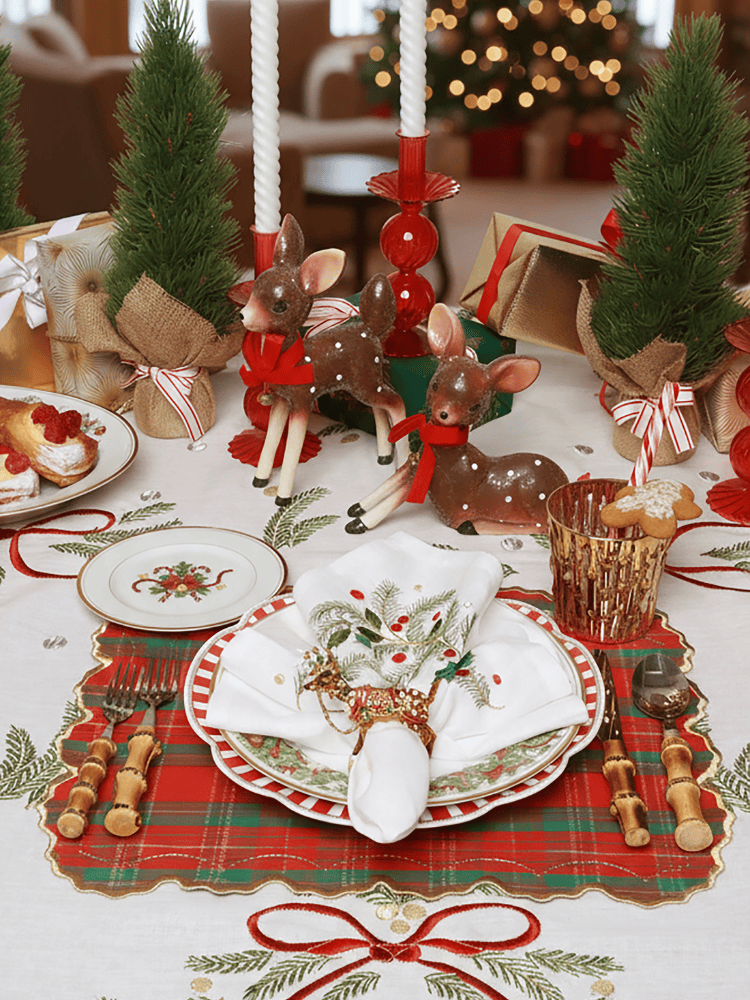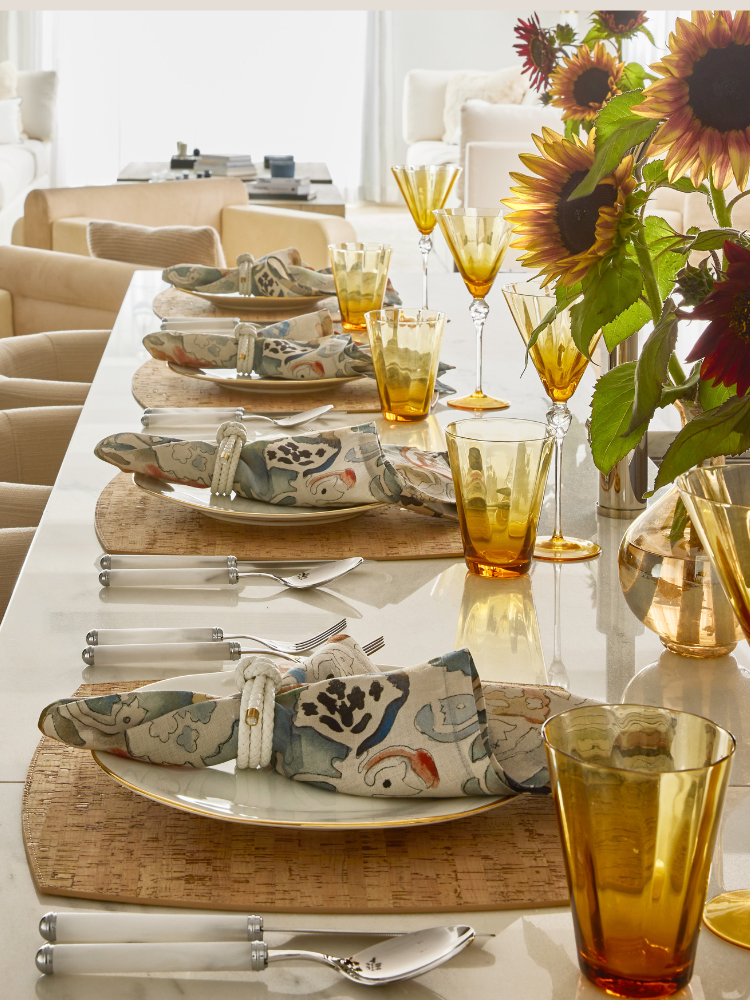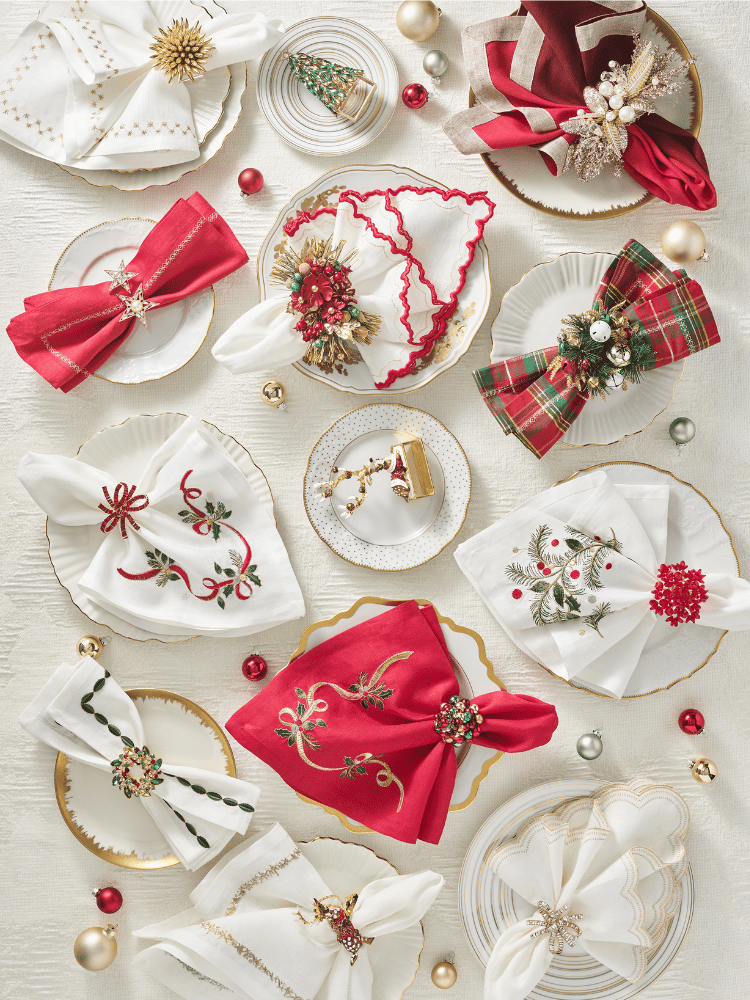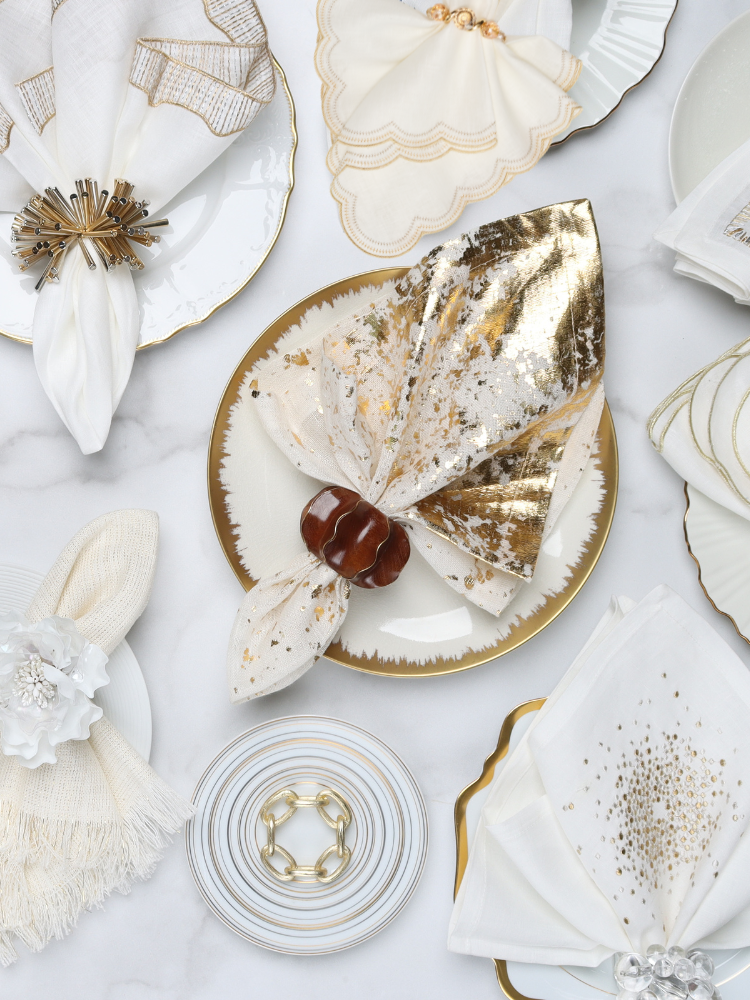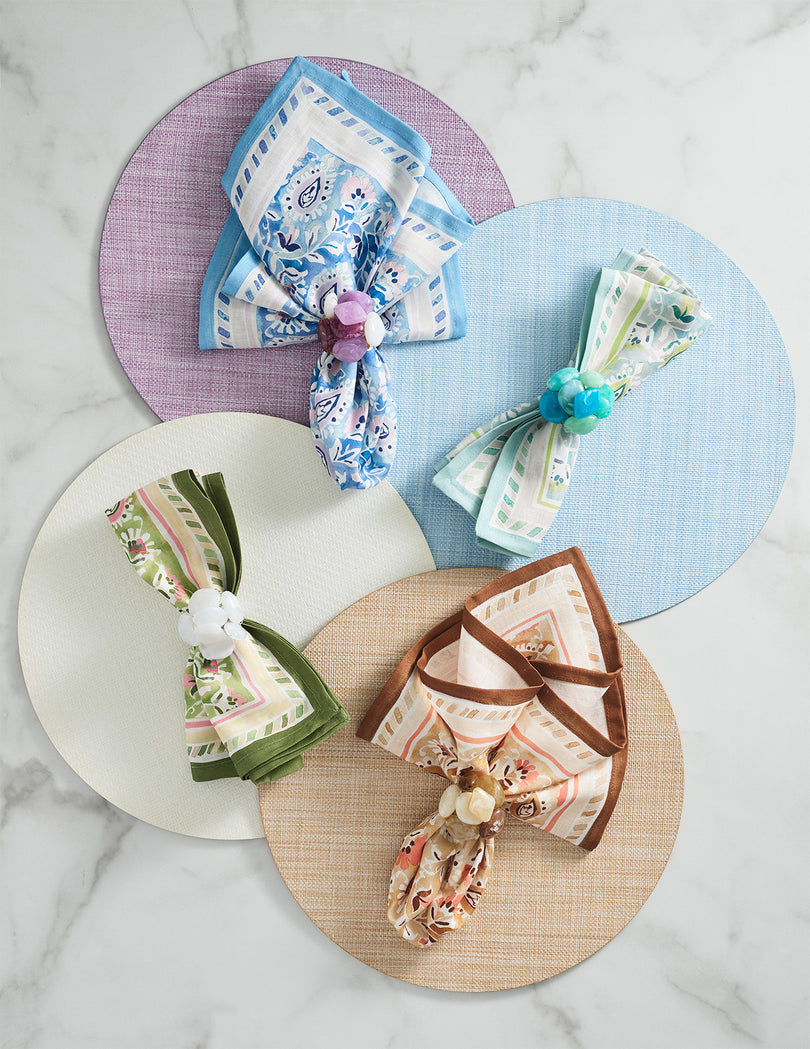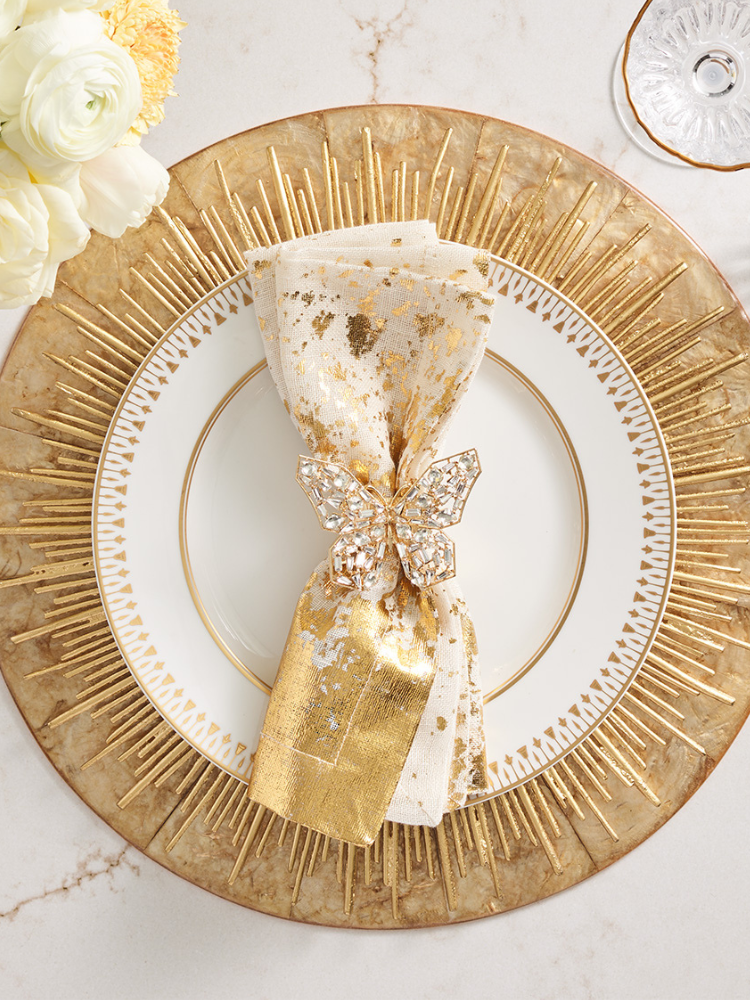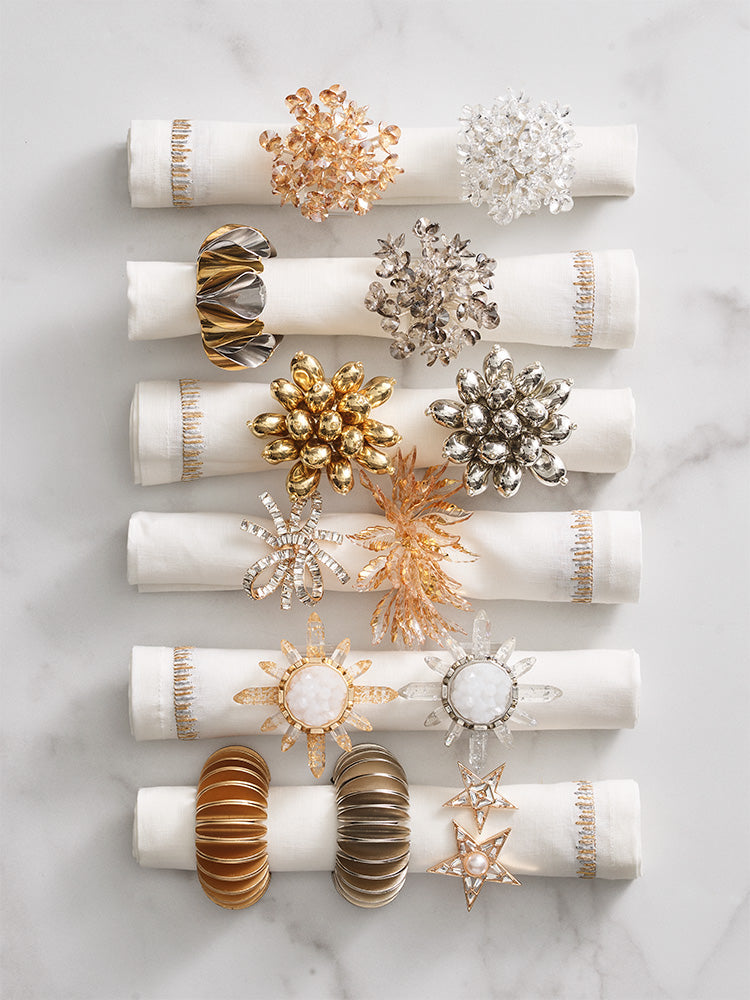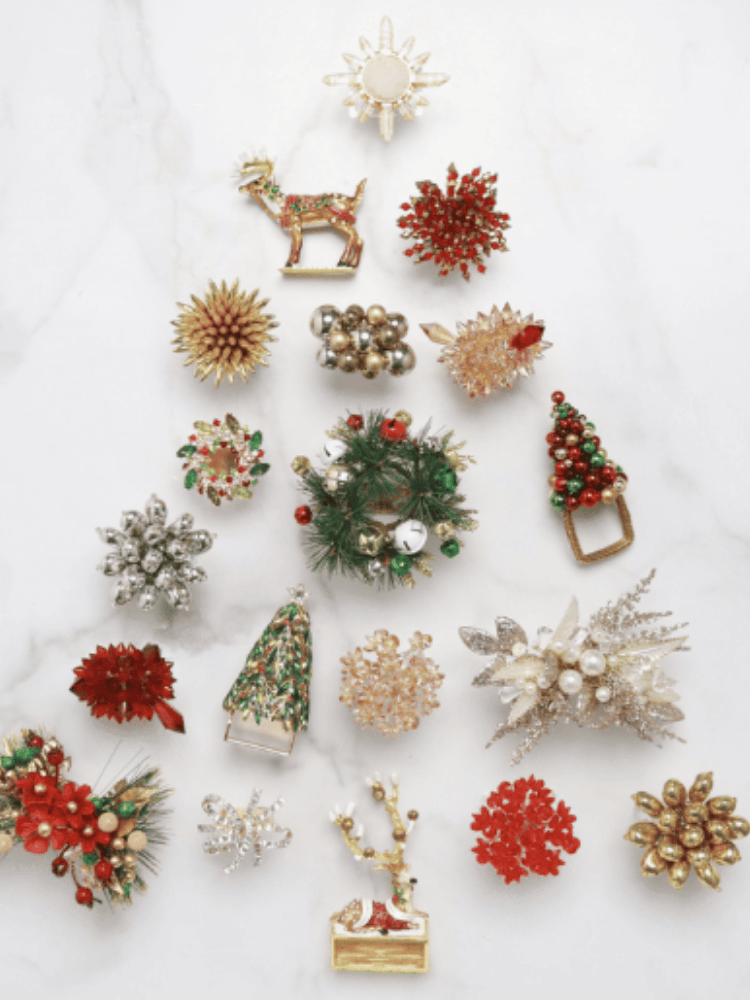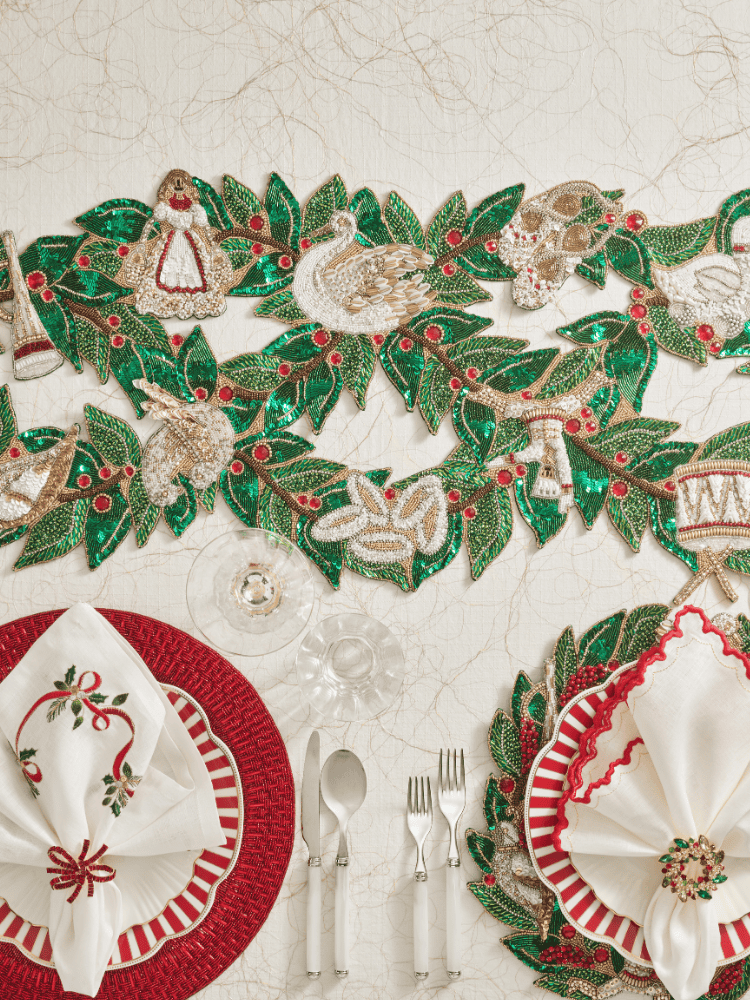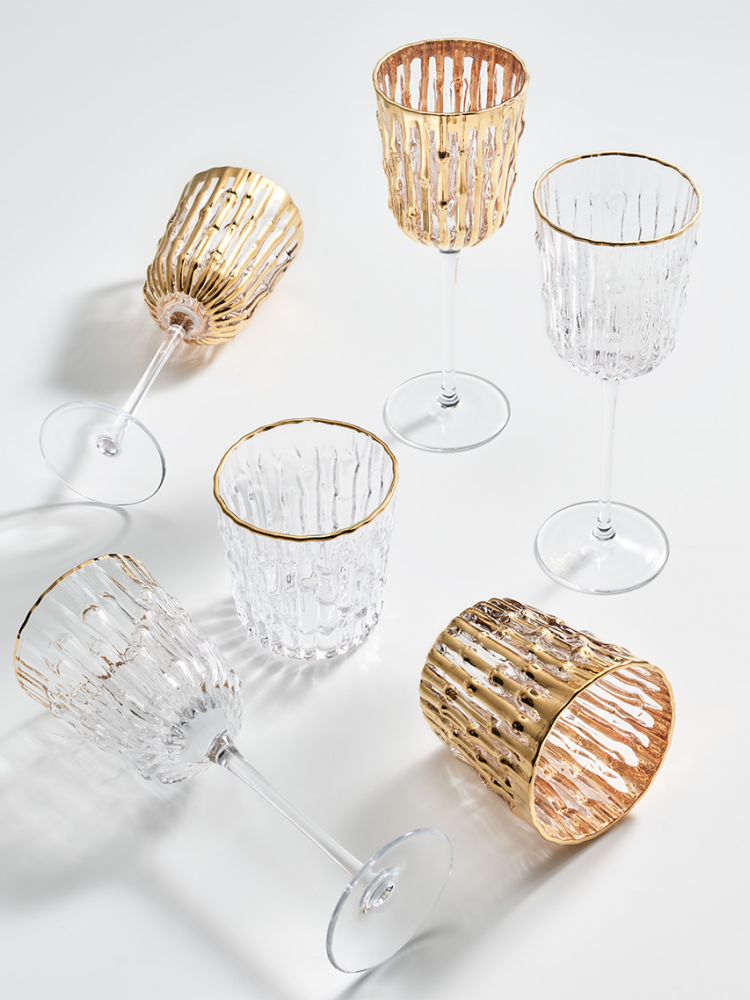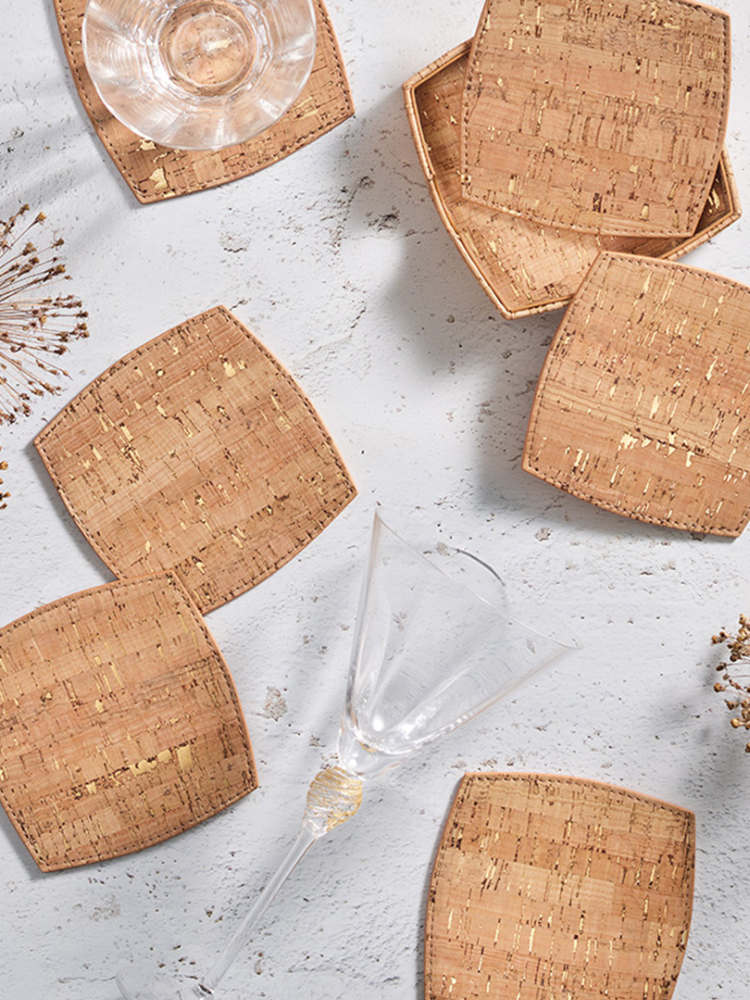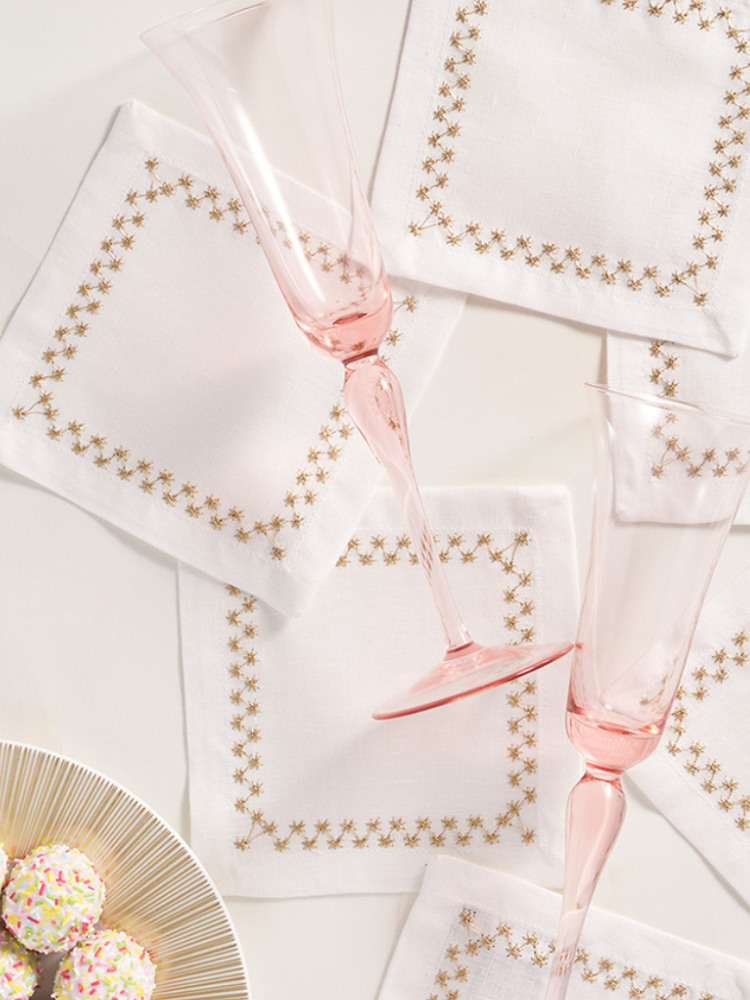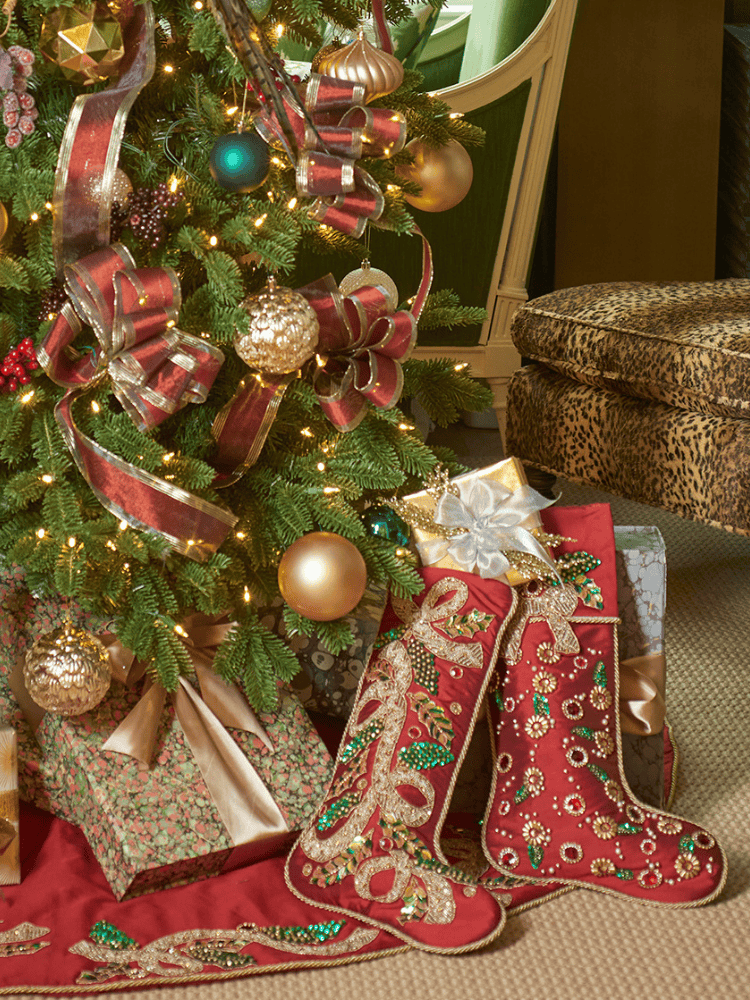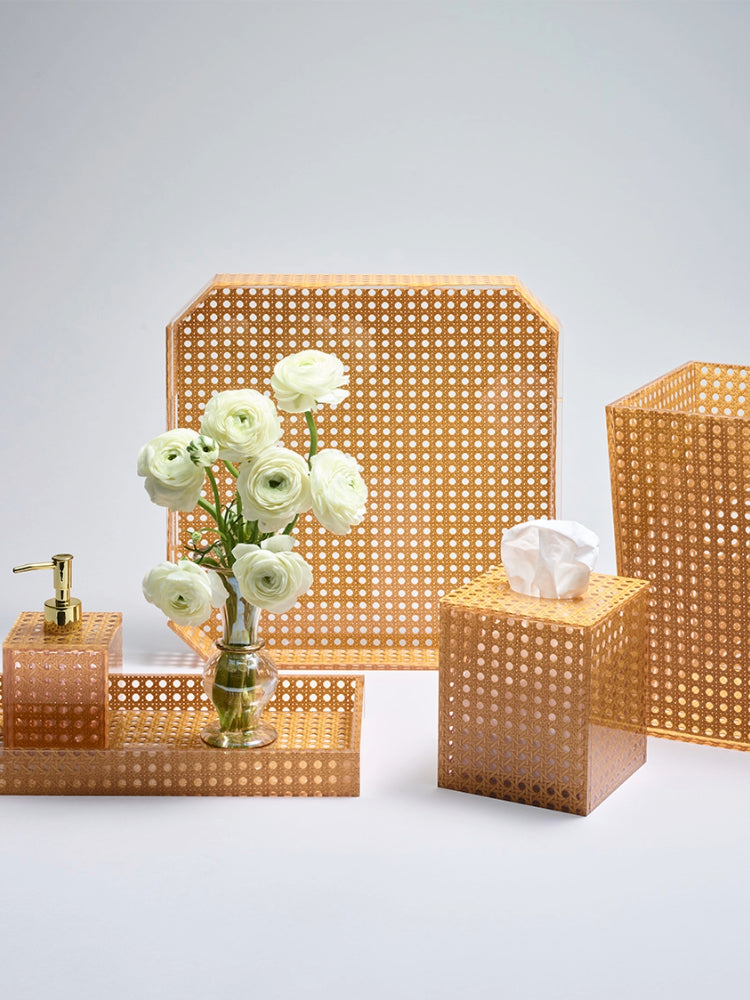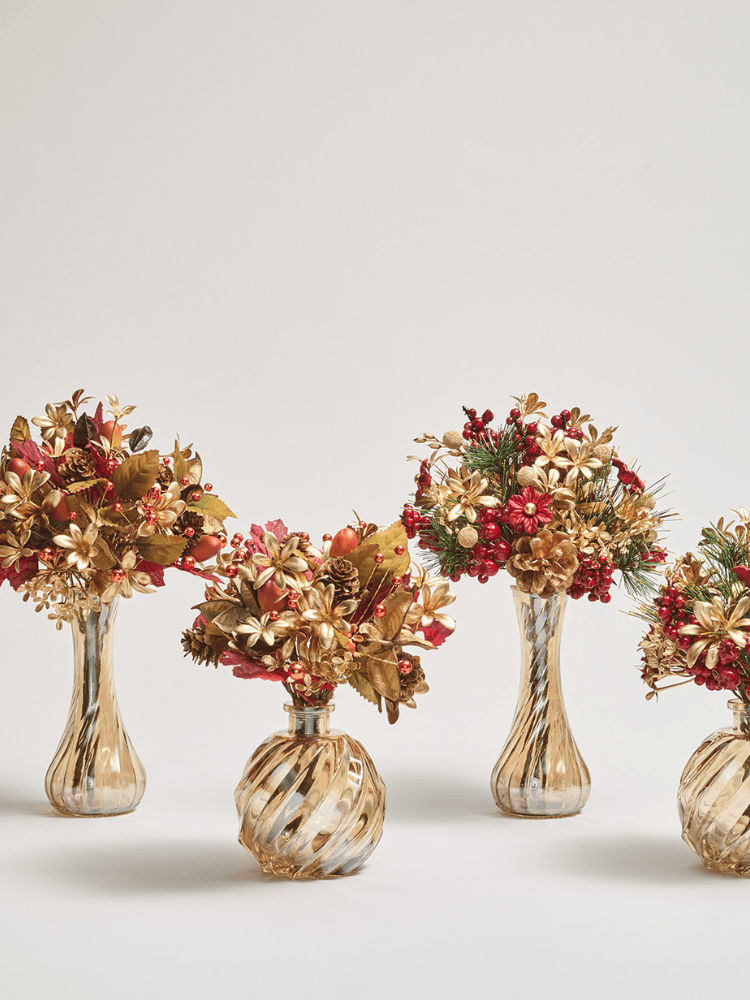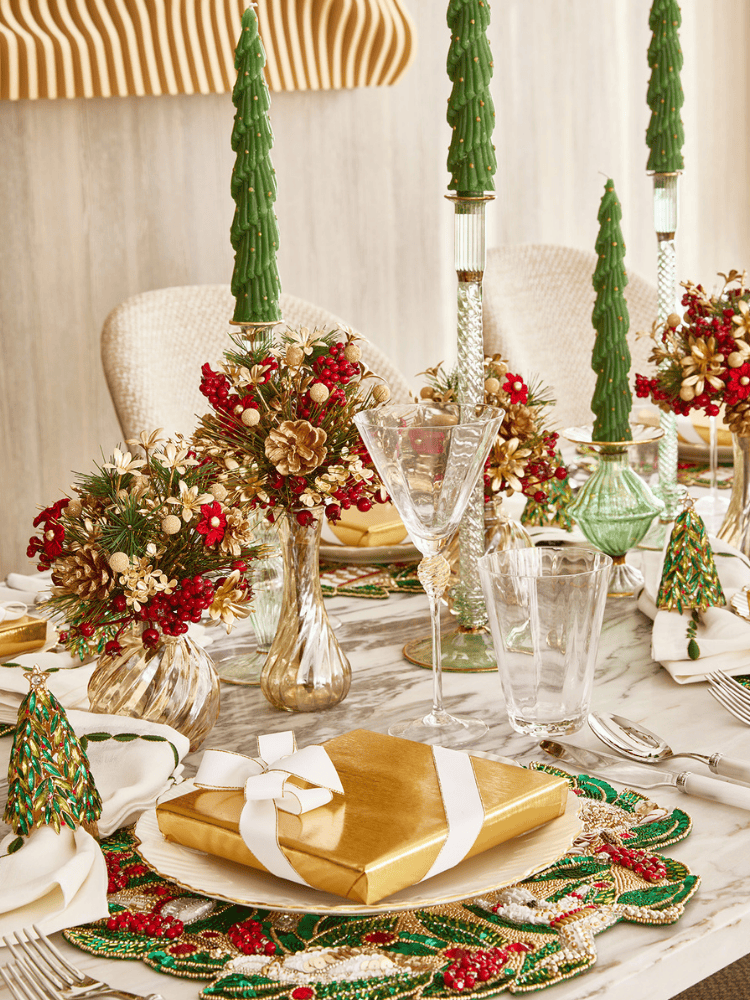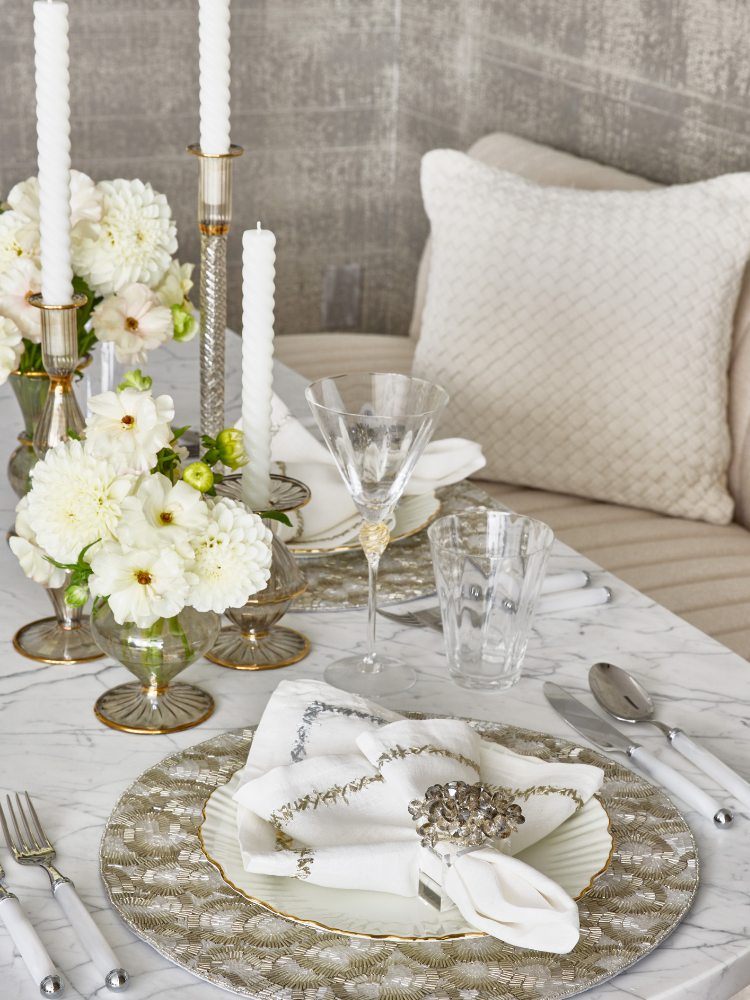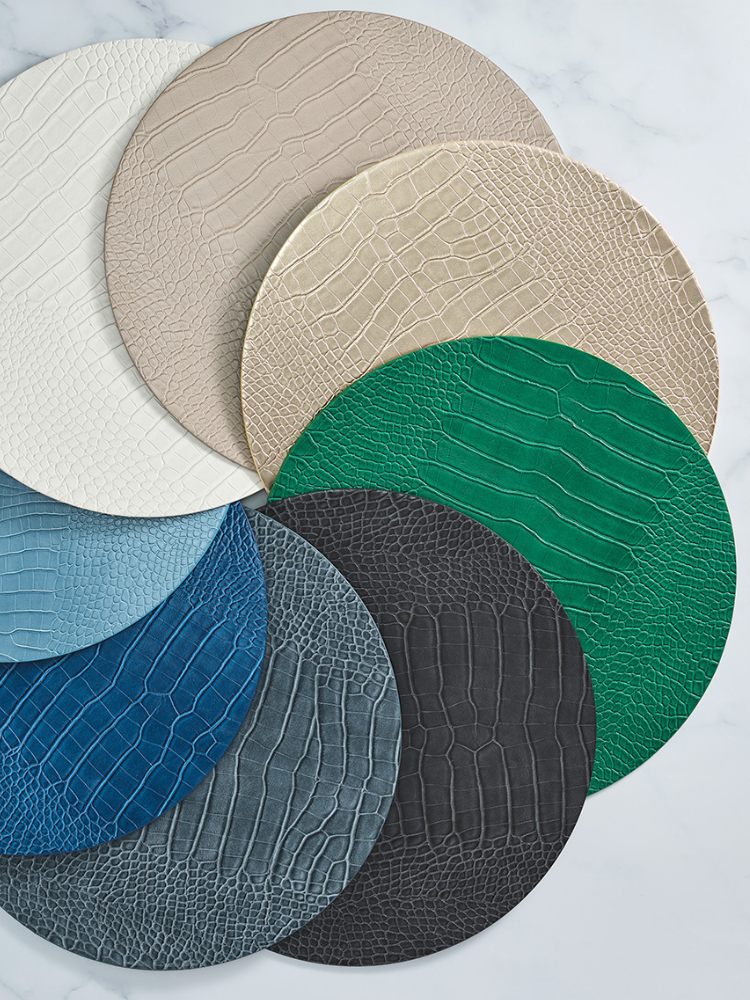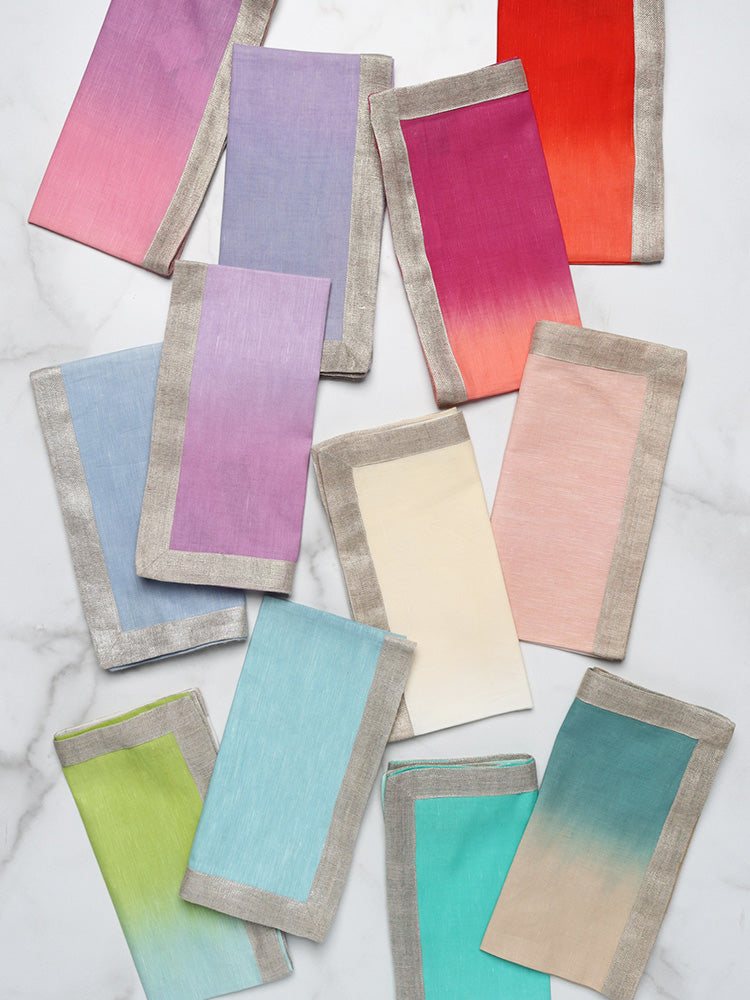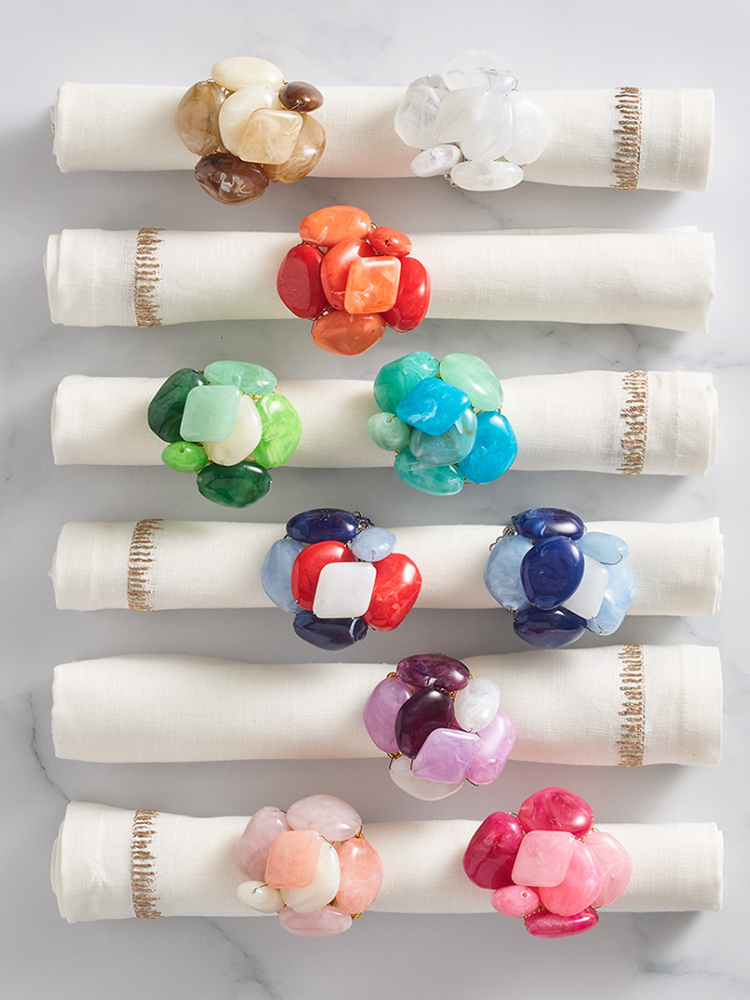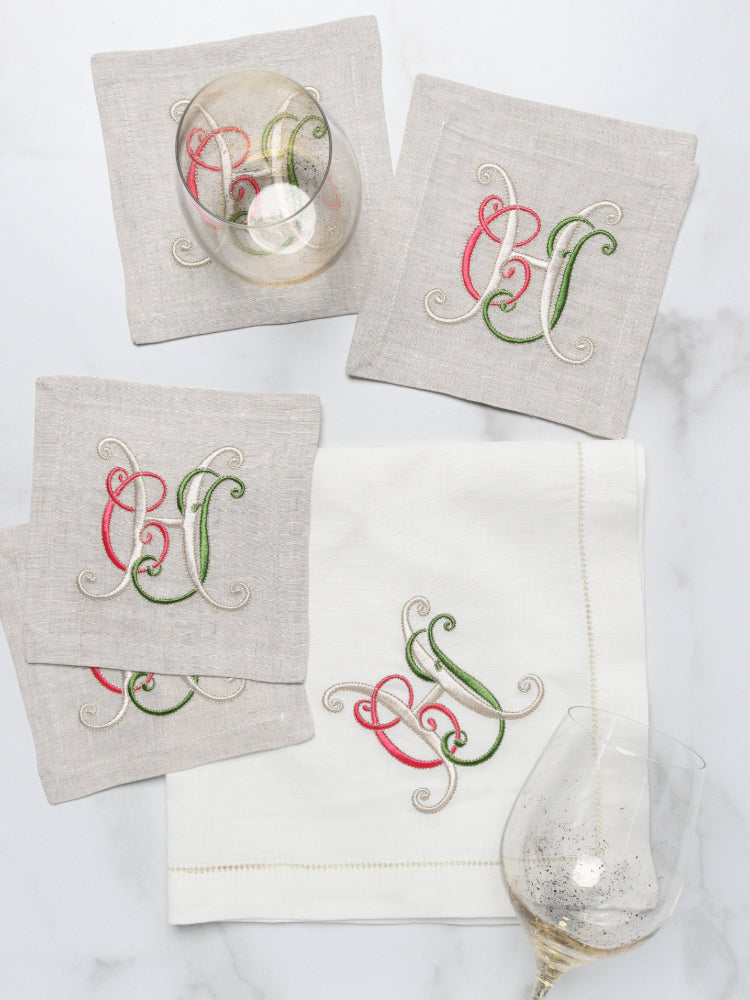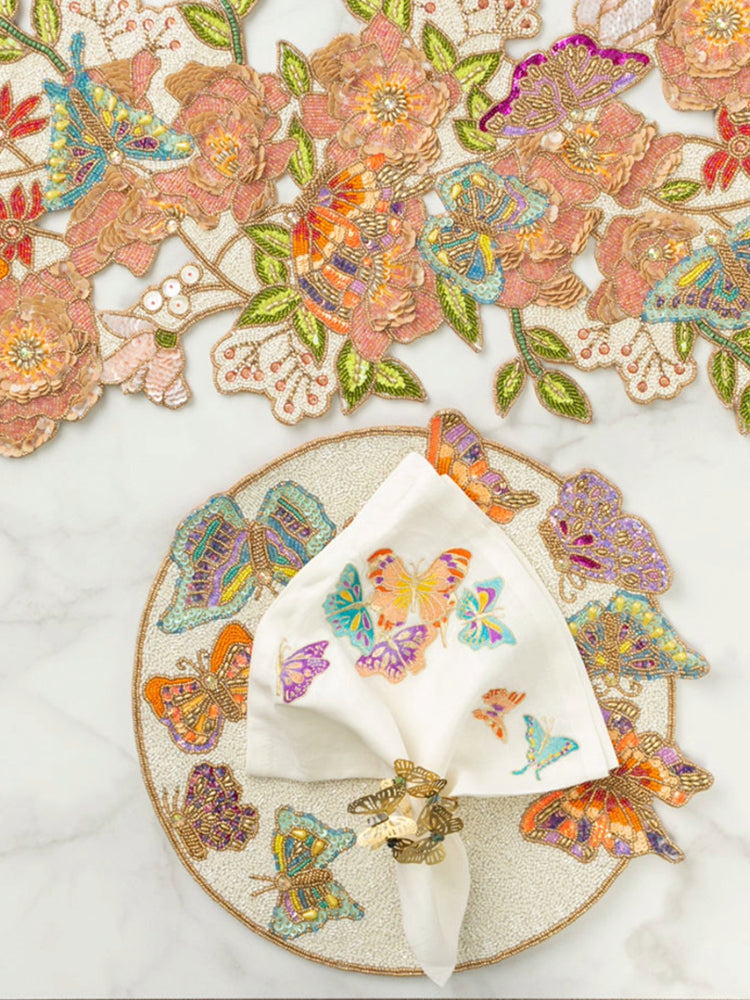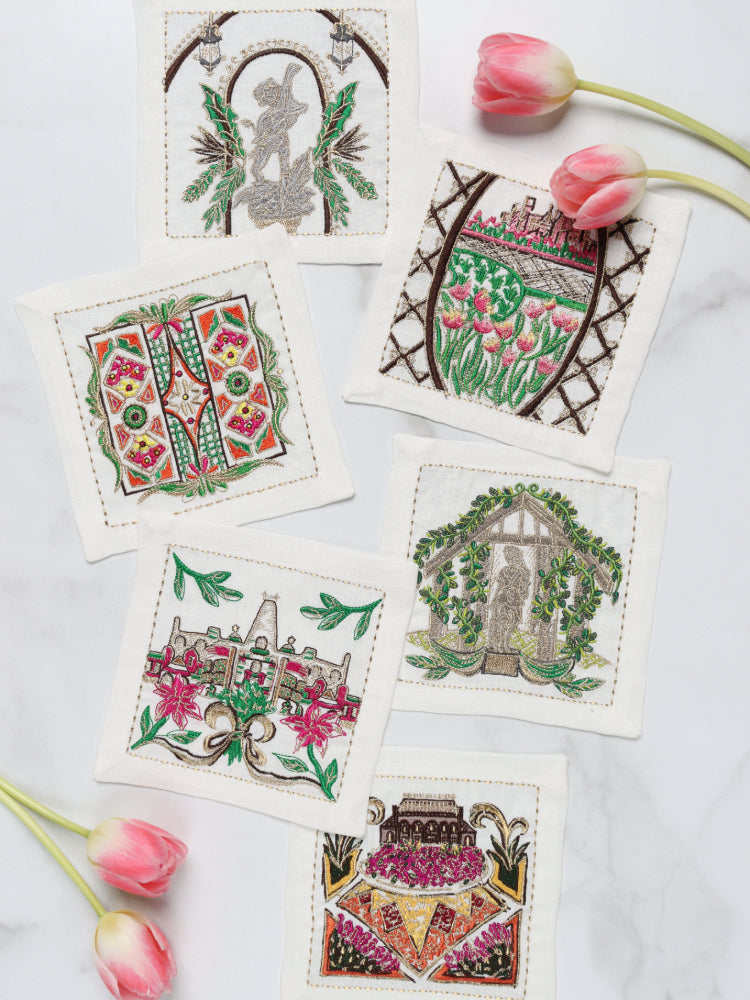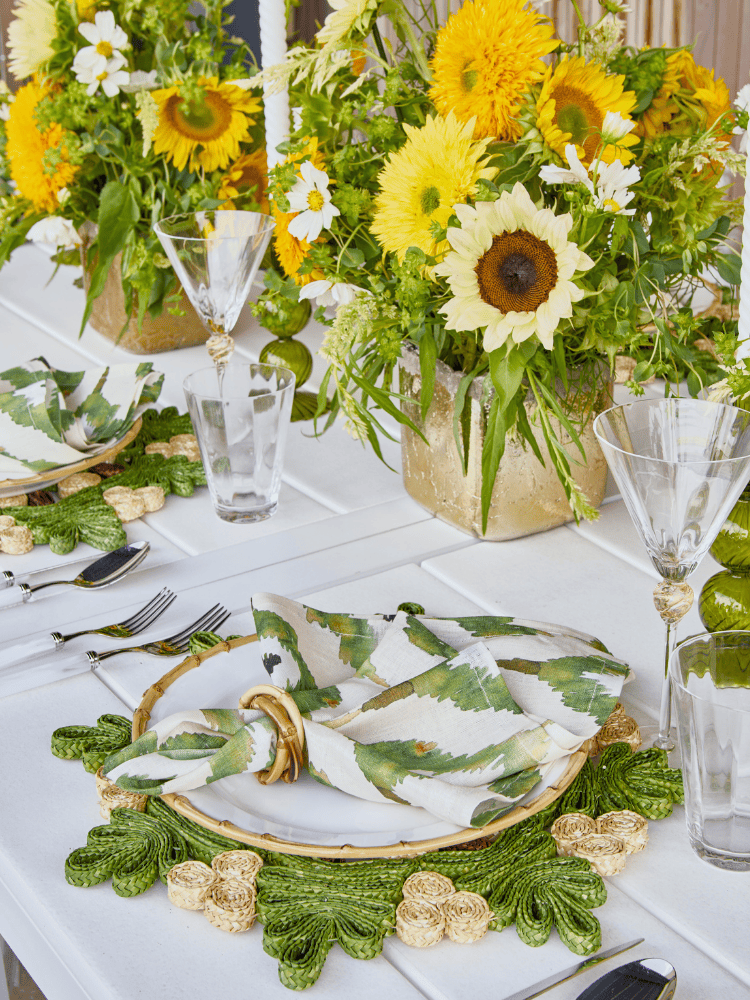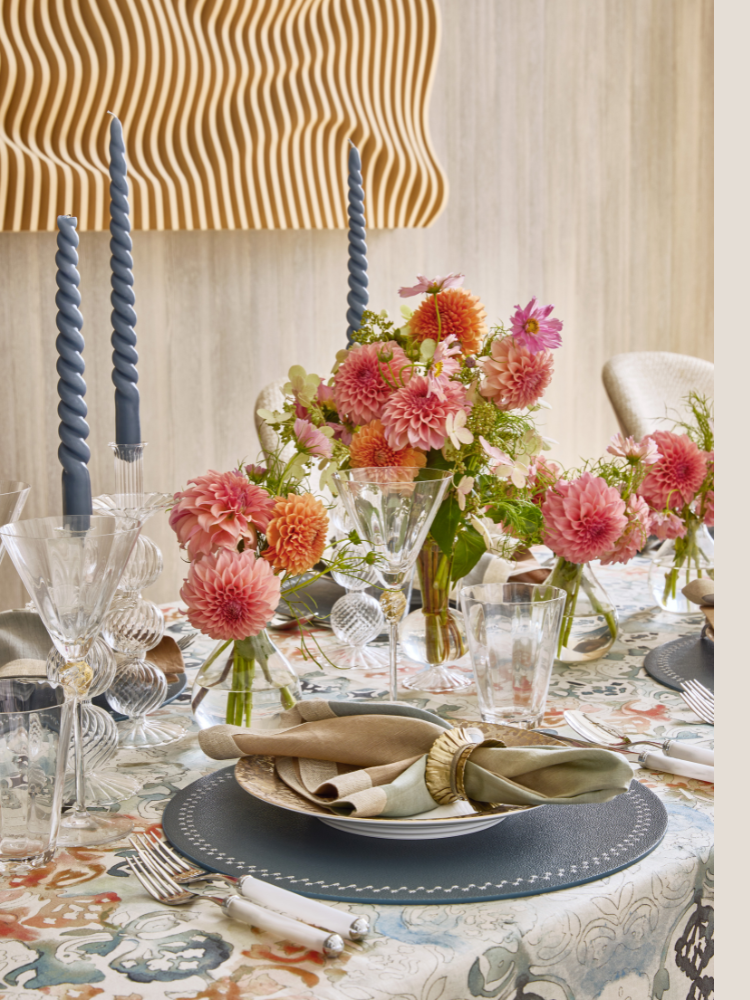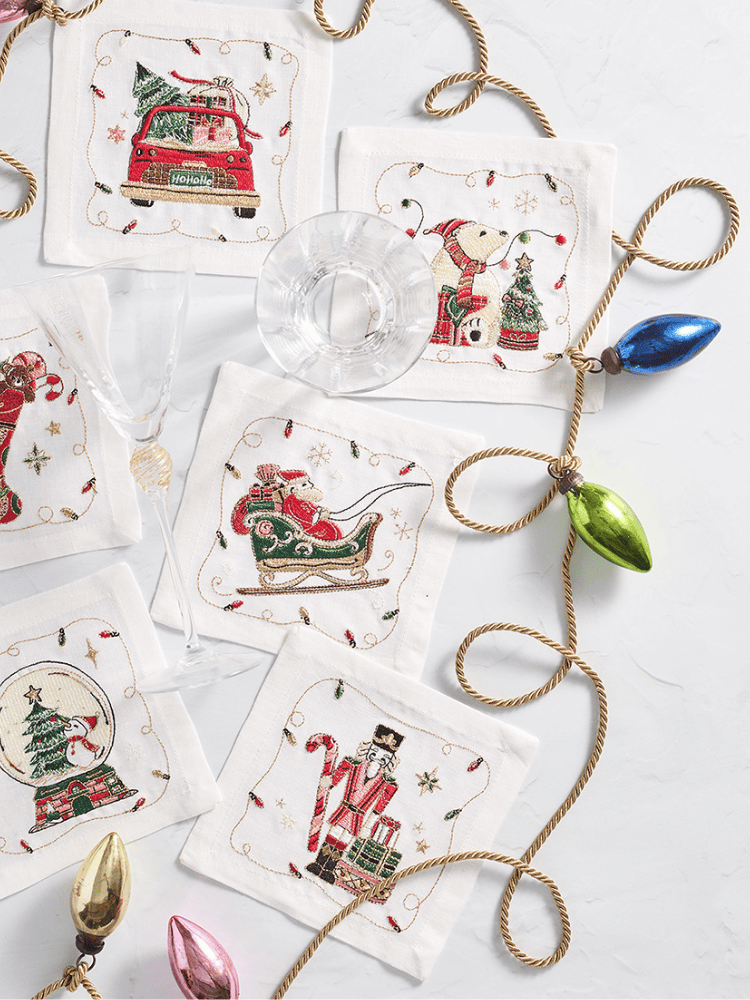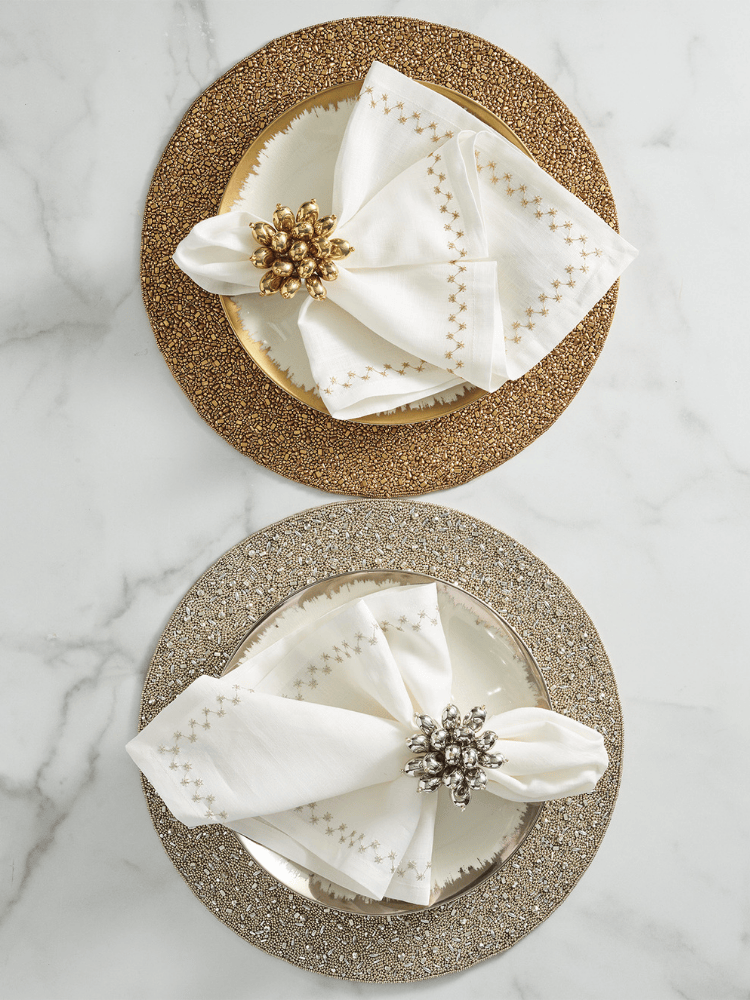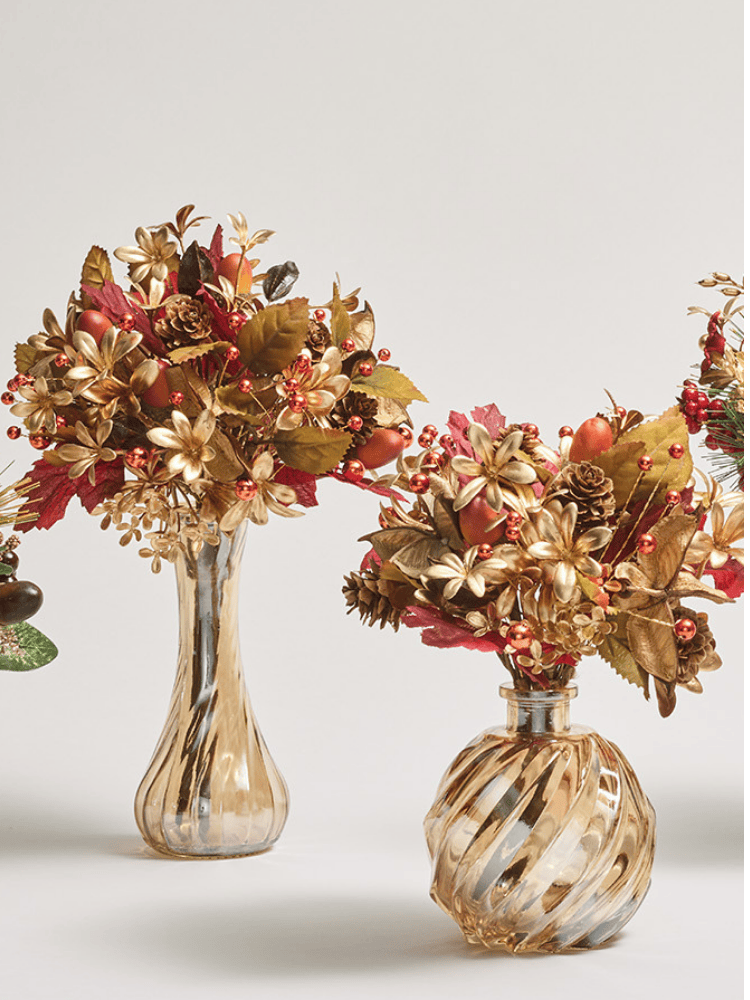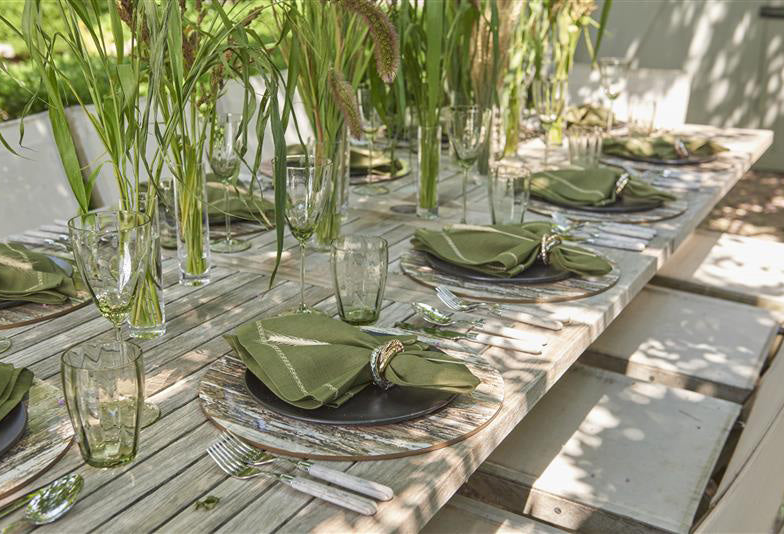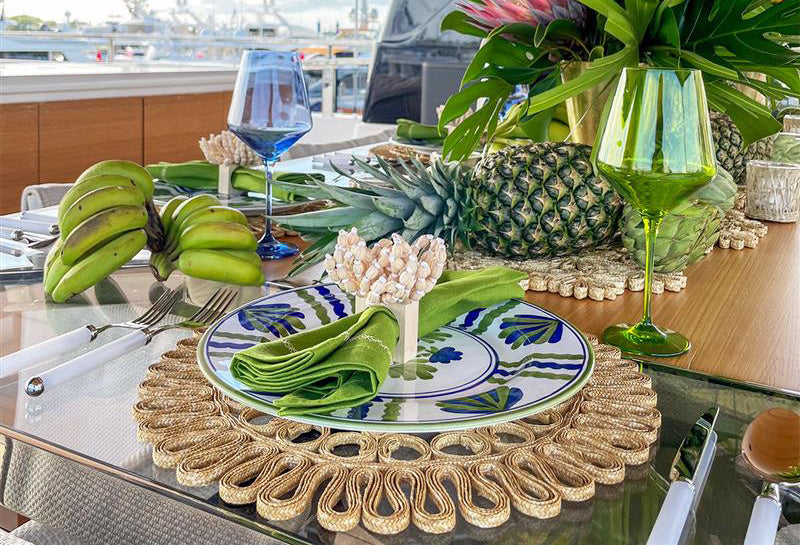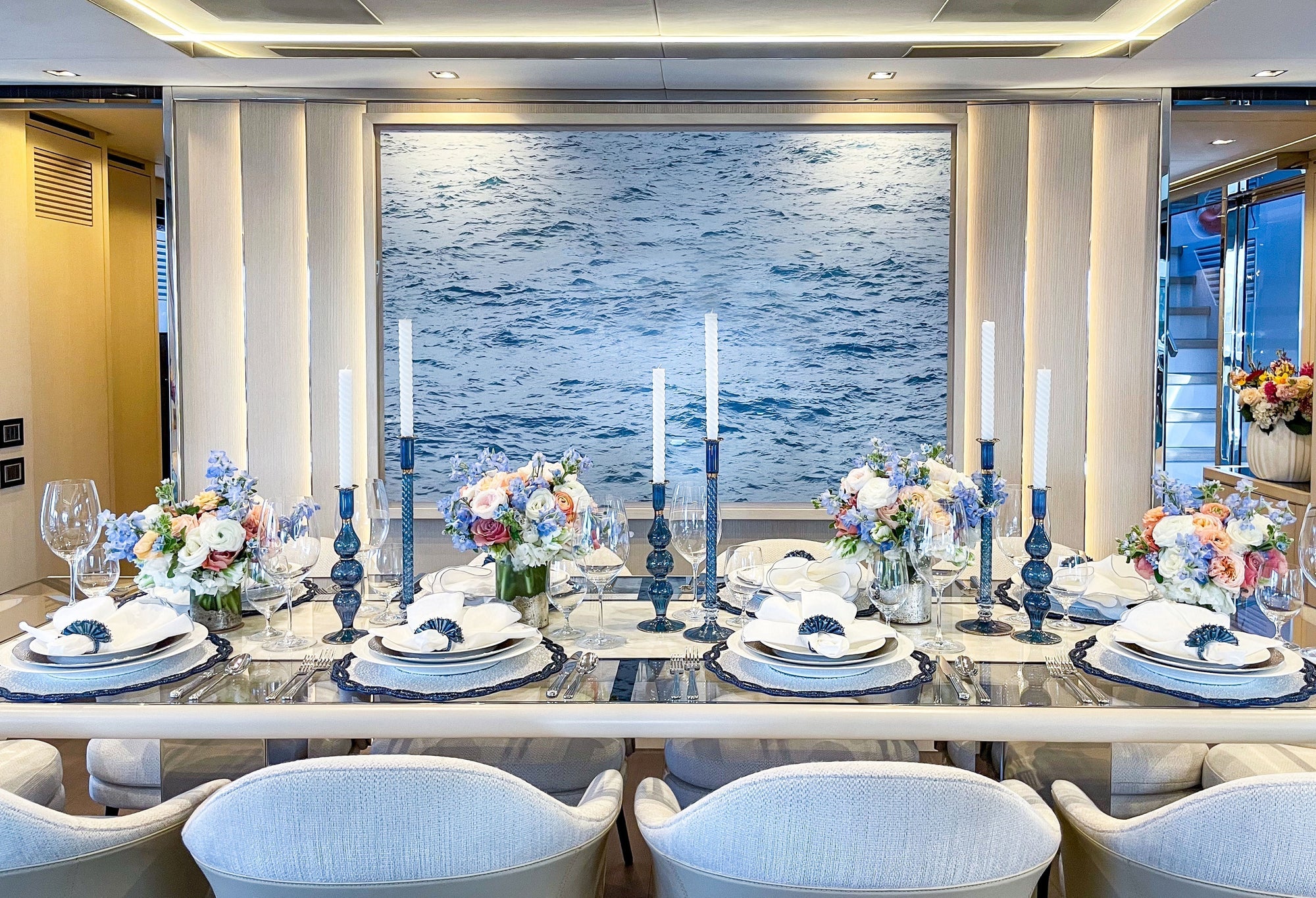Complete Guide to Choosing the Right Form for Vase Shapes

The main different vase shapes include cylinder, bud, trumpet, bottle, cube, amphora, urn, and bowl. Each vase shape has a unique silhouette that changes how flowers sit, how arrangements look, and how a room feels. Choosing the right vase shape depends on the type of flower, interior style, and the mood you want to create.
So, it’s no small task browsing the variety of different vase types. From dining room décor to tabletop designs, each arrangement can feel like a tall order. As a tastemaker in fashion, lifestyle, and entertaining, Kim Seybert knows how to treat simple vases as part of the art of entertaining.
In this guide, you’ll find a clear breakdown of vase shapes, sizes, materials, and styles. Kim Seybert shares expert advice on pairing luxury vases, flowers, and rooms that deserve an extra bit of beauty.
Key Takeaways: What Are the Different Vase Shapes?
- The major vase shapes are cylinders, bud vases, trumpet vases, bottle vases, cubes, squares, amphoras, urns, and bowls. Each creates a distinct look in floral design and home décor.
- The shape of a vase impacts proportion, balance, and the longevity of flowers. Tall vases support long stems, while wide vessels let blooms open fully.
- Material changes the effect: glass vases highlight stems, ceramic vases add texture and artisan detail, and metal vases bring shine and edge.
- Different flowers suit different shapes. Roses work well in cylinders or urns, tulips bend nicely in bottles, orchids shine in amphoras, sunflowers require stable cylinders, and wildflowers feel natural in bowls or bud vases.
- Styling depends on placement. Tall vases suit entryways, while low bowls are best for dining tables. Cubes and bottles work well on coffee tables, and bud vases bring intimacy to bedrooms.
- From cylinders to bowls and bud vases, Classic vase shapes will always be stylish. Luxury vases can also stand alone as a statement piece of decor.
Most Popular Vase Shapes and Their Characteristics

Every vase shape has a personality. Here’s an overview of the main different vase shapes and how to utilize each one as decor for your home.
Cylinder Vases
Think tall, tailored, and almost like a column dress for flowers. Cylinder vase shapes look flattering with longer-stemmed florals and add structure that keeps them upright. This design can feel sleek and formal with calla lilies, or easy and relaxed with sunflowers and branches.
Bud Vases
Petite, poised, and miniature flower holders. Modern bud vases turn one flower into a statement. Simply clip a rose, a sprig of jasmine, or even a single wildflower to freshen bedside tables or any corner of your home. Or, scatter several bud vases along a table for a minimalist, yet chic centerpiece that allows for easy conversation.
Trumpet Vases
Imagine a couture gown with a cinched waist and dramatic flared skirt. Trumpet vases elegantly showcase voluminous blooms like peonies and hydrangeas. They create instant drama on a dining table or at an event.
Bottle Vases
Slim-necked with a rounded base, bottle vases can feel a little rustic, a little vintage, and always relaxed. Perfect for airy, delicate flowers such as cosmos or delphinium. Try grouping a few together on a mantel or windowsill for a layered, yet casually chic display.
Cube or Square Vases
This modern, geometric design fits spaces beautifully like a crisp white shirt. Best for short stems or structured flowers to offer an architectural accent. Their sleek lines feel at home on coffee tables or lined up along a dining table for a nuanced twist to a traditional symmetrical look.
Amphora Vases
Amphora vases date back to ancient Greece, where clay vessels with two handles and slender necks were used to carry wine and oil across the Mediterranean. Often recognizable by two handles at the vase’s neck, this elongated, sculptural look still feels timeless today. In modern interiors, amphoras in ceramic or stone offer a worldly and collected appeal. Styled with loose greenery or standing empty, they bring a sense of history and drama to a room.
Urn Vases
Traditional or pedestal-based, urns epitomize grandeur. Place one in an entryway or dining room to create a strong focal point as designer centerpiece vases. Or set the tone at a luxury tablescape with an overflowing assemblage of roses, branches, or mixed blooms.
Bowl Vases
Low, wide, and inviting. Bowl vases make flowers feel abundant without blocking conversation. Perfect for garden roses, dahlias, or floating blossoms. Ideal for dining tables that call for ease and elegance.
How Vase Shapes Interact with Glass, Ceramic and Metal

Material is what makes a vase truly take shape. Glass, ceramic, and metal alter the overall look, feel, and interaction of the vase with the room.
Glass Vases
Glass vases illuminate everything from the sweeping curve of the vessel, the delicate stems, and even the water. Kim Seybert’s choice of Czech glass is prized for its exceptional clarity and weight. Often considered some of the finest glassmakers in the world, the region creates a clarity allows light to shine through to make flowers appear brighter.
Hand-cut details and mouth-blown craftsmanship also add sparkle that feels like jewelry for the table across her signature collection of artisanal vases, high-end glassware, and colorful glass candle holders.
Ceramic Vases
Many ceramics often offer artisanal finishes, so no two ever feel alike. Subtle shifts in the surface lend character and a distinctly hand-crafted quality. Glossy glazes might read bold and opaque or sheer enough to reveal the clay beneath. High-shine lacquer brings polish, but softer treatments can still catch the light. Matte finishes can veer into velvety or satin-smooth. A splash color adds that timeless twist on traditional decor, as seen in the Mediterranean centerpiece pictured above.
Metal Vases
Metal vases bring polish with an edge to pair with details in designer dinnerware sets and elegant placemats. Brass or nickel can feel glamorous. Iron or bronze will lend a more industrial and moody vibe to your space. Each reflective surface can sharpen outlines so a cube vase shape can suddenly look cleaner, or a trumpet shape reads even bolder with flashes of fashionable flair.
Matching Shapes with the Right Flower Types

Shape, width, and stem length all affect how an arrangement looks and lasts. Remember, the same flower can shift its style in different vase shapes:
Roses
- Urns: Let blooms open wide for a romantic, abundant effect
- Cylinder vases: Keep stems straight and refined
- Cubes: Short stems feel modern and structured
Tulips
- Bottle vases: Support their natural curve and arch
- Cylinders: Allow stems to spread with casual ease
-
Bowls: Encourage a soft, draped look over the rim
Orchids
- Trumpet vases: Amplify their height and elegance
- Cylinders: Ground tall stems with clean stability
- Amphoras: Frame orchids as sculptural focal points
Sunflowers
- Bottle vases: Create a rustic, countryside mood
- Cylinders: Anchor their heavy heads and keep them upright
- Urns: Give them grandeur in bold, clustered groupings
Wildflowers
- Bud vases: Showcase single stems with airy charm
- Bottle vases: Feel casual and collected, like a fresh gathering
- Bowls: Create a loose, meadow-inspired arrangement
Designer tip: A short round vase can give hydrangeas a stable base with plenty of room to open up, as seen in the above Kim Seybert arrangement. The vase shape also brings balanced and luxurious with layers of orchids and greenery for fresh views at every angle. To complete the look, wrapping natural rope around the clear glass vase adds coastal elegance.
Top 10 Mistakes for Vase Shapes And Flowers With Easy Fixes
- Choosing a vase that hides blooms because it’s too tall. Go for a vessel that’s half to two-thirds the height of your stems and the flowers.
- Using an opening that’s too wide, so stems collapse outward. Instead, switch to a slimmer neck with a flower frog or grid to keep stems upright.
- Overstuffing small vessels until flowers look cramped. Remember to resist the urge since one dramatic stem or a tight, small floral cluster can still be chic and stylish.
- Putting heavy flowers in lightweight vases that tip easily. The answer? Anchor statement blooms like hydrangeas in weightier ceramics or thick-walled glass
- Ignoring scale: tiny vases can get lost on large tables, and oversized pieces might overwhelm small spaces. Make sure to match the moment.
- Leaving leaves below the waterline, which rot and cloud the water. Try stripping any submerged foliage to keep the water clear and the flowers fresher.
- Allowing water levels to sit too low in tall vessels causes the stems to dry out. What’s an easy fix? Keep vases at least two-thirds full so stems stay fully hydrated.
- Skipping a fresh trim when placing flowers, which limits water uptake and balance. You should always cut stems at a diagonal under running water before arranging. Repeat to keep flowers alive longer.
- Mixing fragile stems with heavy ones in the wrong vessel can cause delicate blooms to get crushed. For cosmos and airy stems, give them their own vase instead of pairing with hefty flowers.
- Forgetting to rotate arrangements, which makes flowers lean unevenly toward the light. So, turn your vase by one-quarter length each day to keep growth balanced and elegant.
After selecting your shape, proper care for your flowers will keep them alive longer and extend your style.
Choosing the Right Shape for Every Room and Tablescape

The shape of a vase changes how a room feels. As seen above, a few clusters of bud vases add fullness without blocking conversation at a chic table for two. In an entryway, tall cylinders or urns make that big first impression with branches or seasonal blooms. Coffee tables call for structure, such as a cube for polish or a slim bottle vase for ease, without too much bulkiness. In bedrooms, a small amphora or bud vase adds a subtle and personal touch. And sometimes flowers aren’t needed at all. Many designer vases are elegant enough to stand alone like a piece of artwork on a console or mantel.
Simple and Classic Vase Shapes That Never Go Out of Style

Some vase shapes never go out of style like the rustic charms of this planter vase shape in this picture-perfect arrangement. Cylinders, bowls, bud vases are a few more sophisticated go-to staples.
A clear glass cylinder is versatile and works with roses, branches, or greenery. Bowls create low and full arrangements that suit dining or coffee tables throughout the year. Bud vases highlight single stems and bring charm to a nightstand, shelf, or table.
These simple vase shapes are the foundation of any collection. Start with a few in glass or ceramic, then add statement pieces as you continue to entertain. Another designer pro-tip is pairing with coordinating drink coasters to protect your surfaces from the possibility of water condensation.
Final Thoughts on Choosing the Right Vase Shape

As much as we might wish it, your flowers don’t arrange themselves. However, vase shapes can help style how stems fall, how blossoms draw the eye, and even how to keep flowers alive longer. The truth? A few floral design secrets and the ideal shape can make the simplest bouquets blossom with beauty.
The best approach is to experiment. Start with a few timeless styles in rotation, and add artisanal designs along the way. Shape can reflect style as much as color or material.
Once you start paying attention, you’ll see how luxury vases can define your tablescape inspiration and change the way you live with flowers.
Frequently Asked Questions: Vase Shape, Size, Style

1. What is the best vase shape for long-stemmed flowers?
The best vase shapes for long-stemmed flowers are tall, cylindrical vases and trumpet vases. They give roses, lilies, or gladiolus the support they need to stay upright.
2. How do I choose the right vase shape for my space?
Select a vase shape that suits both proportion and function. Low vases work best for dining tables, while tall urns or cylinders add height in entryways and mantels.
3. Which vase shapes work best for minimalist or modern interiors?
The best vase shapes for minimalist interiors are simple cylinders, cubes, and bottle vases. Their clean lines complement modern decor.
4. What type of vase should I use for roses, tulips, or orchids?
Roses look best in cylinders or urns. Tulips are suited to narrow-neck bottle vases or bowls. Orchids need stable shapes like weighted cylinders or amphoras.
5. How does the material of a vase affect its style?
The material changes the effect of the vase shape. Glass highlights stems and water, ceramic adds texture and artisan appeal, and metal gives shine and edge.
6. What are the most popular vase shapes for home decor?
The most popular vase shapes are cylinders, bowls, bud vases, and urns. These types of vases are timeless and versatile for everyday use.
7. What vase shape is best for a dramatic centerpiece?
Urns and trumpet vases are the best vase shapes for dramatic centerpieces. Their wide openings create large, eye-catching floral displays.
8. How do I match flower types with the right vase proportions?
Follow the 1.5 rule: flower stems should be about one and a half times the height of the vase. Narrow-neck vases suit delicate flowers, while wide vessels support fuller blooms.

